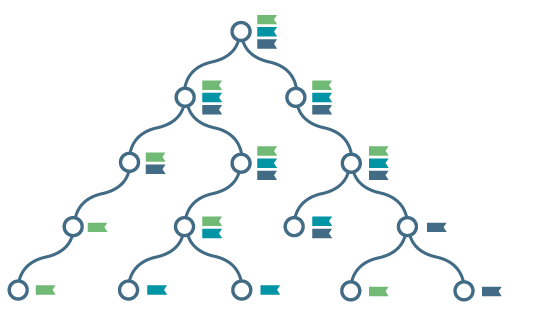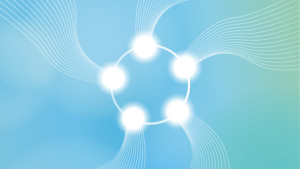
Coreon is the only software that brings together expertise of knowledge and language in one comprehensive solution: a Multilingual Knowledge System (MKS).
Coreon unifies knowledge with language by combining Concept Maps (technically known as graphs) with Terminology Data. A concept map semantically links individual entries (concepts), while each entry itself is elaborated into potentially dozens of languages with unlimited descriptive and documentary information.
The Concept Map…
The language neutral graph – made up of linked concepts – is the core of Coreon’s MKS.

Concepts are linked in hierarchical broader-narrower relationships that can include multiple ‘parents’, as well as in associative relationships. Importantly, the linking is not per term but per concept. This means the maintenance of the relationships is not dependent on labels or terms and their variants, but happens efficiently only once per concept. In other words, working on terms has no side-effect on the concept relations.
An MKS is always based on a full graph for all types of content, taxonomies, and thesauri, as well as semantically rich ontologies. Thus, for one set of concept nodes potentially several semantic maps (“sets of graph edges”) can be applied.
… and the Terms
Human language is not deterministic but ambiguous (bank in bank institute vs. in river bank), it has synonyms and spelling variants (ATM – automatic teller machine – cash dispenser – self-service bank), and of course is multilingual (Geldautomat / Bankomat – guichet automatique – cajero automático).
In Coreon the concept model was implemented to capture:
- Multi-directionality: All terms, in all languages that belong to the same concept are all stored in one record. Users simply change the desired language with a mouse-click instead of maintaining several databases per language.
- Unlimited amount of terms: There is no need to maintain links between terms, there is no “one synonym” field. Terms become synonyms since they are simply stored within the same concept; there is no limit on the amount of terms/synonyms.
- Term autonomy: Each term can carry the full set of descriptive meta data information. This means that all terms in all languages are exhaustively described.
Even different terms can become “preferred”, to support different contexts and situations: for instance, once the full form ‘European Central Bank’, once its acronym ‘ECB’.
Separate yet Linked
The two information types – knowledge via the semantically linked concepts, and language via the terms – are modeled and stored separately from each other, but coupled through unique concept identifiers. This makes the concept map completely independent from the terminological information. This responds to a key pragmatic requirement: One concept map for all languages.

Linking a language neutral knowledge graph with richly annotated multilingual terminology. In Coreon a fusion of the two relevant leading standards has been achieved: W3C’s SKOS with ISO’s TBX .
If you would like to know more please download the White Paper on Multilingual Knowledge Systems or contact us and we would be happy to answer your questions.


